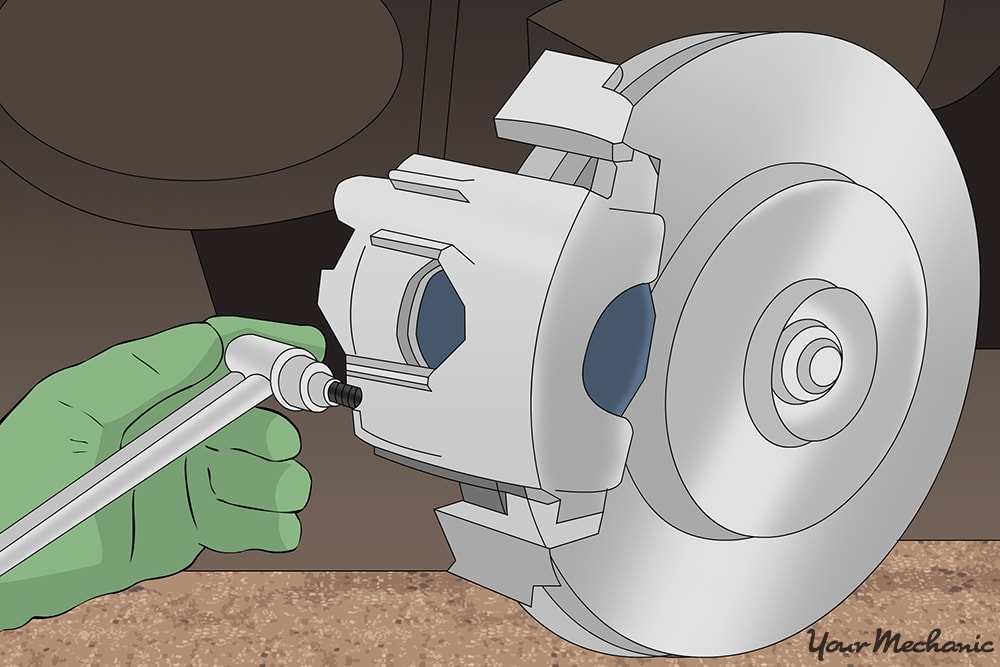

A leading cause of brake system failure is due to brake caliper bolts failing. The problem is – in most instances, it’s due to human error. While replacing brake pads is a fairly simple task, the problem happens when mechanics don’t take the time to correctly tighten the brake caliper bolts. To help you avoid potentially catastrophic damage to your vehicle or an accident that causes harm to you or others, here is a simple guide for how to tighten a brake caliper bolt in 5 steps.
Step 1: Correctly remove the brake caliper bolts
Just like any other fastener, the brake caliper bolts work best when they are removed and installed properly. Due to their location and tendency to become corroded with debris, the brake caliper bolts can become rusty and quite difficult to remove. So, to reduce the potential of damage, removing the bolts correctly is an important first step. Here are 3 basic tips, but always refer to your service manual for the manufacturer’s recommended steps as not all brake calipers are made from the same materials.
Use a high-quality penetrating fluid to absorb rust on the bolt.
Let the bolt soak for at least five minutes before attempting to remove.
Make sure to remove it in the correct direction. Note: While we’re all taught that lefty-loosey – righty-tighty is the preferred method, some brake caliper bolts are reverse thread. This is where referring to your vehicle’s service manual is critical.
Step 2: Inspect the bolt and bolt holes on the spindle
Once your caliper bolts have been removed, and you’ve removed all brake parts that need to be replaced, the next step before installing new components is to inspect the condition of the caliper bolt and the bolt holes located on the spindle. There is a very simple way to test the condition of each. If you remove the bolt and it’s rusty – throw it out and replace it with a new one. However, if you’re able to clean the bolt with a mild steel brush or sandpaper, it can be reused. The key is to see how well it fits inside the bolt hole located on the spindle.
The bolt should easily turn into the spindle and should have zero play as you insert it into the bolt hole. If you notice play, the bolt needs to be replaced – but, you also need to continue to the next important step.
Step 3: Use a thread cleaner or “thread chaser” to rethread the bolt hole
If your bolt and bolt hole did not pass the “play” test above, you’ll need to rethread or clean the inner threads of the bolt holes before installation. To accomplish this, you’ll need a thread cleaner – commonly referred to as a thread chaser – that matches the exact thread as your spindle. One helpful hint is to take a brand-new brake caliper bolt for your vehicle and cut three small sections vertically on the bolt, and hand-tighten it slowly as it’s inserted to the bolt hole. Slowly remove this thread chaser and re-test the newly cleaned bolt hole with a new bolt.
There should be zero play and the bolt should insert easily and be removed easily before tightening. If your cleaning job didn’t do the trick, stop immediately and replace the spindle.
Step 4: Install all new brake system components
After you’ve verified that the brake caliper bolts and the bolt hole on the spindle are in good shape, follow your vehicle service manual and correctly install all replacement parts in the exact procedure and order of installation. When it comes time to install the brake calipers, make sure you follow these 2 critical steps:
Make sure the new threads have thread-locker applied. Most replacement brake caliper bolts (especially original equipment manufacturer components) will have a thin layer of thread locker already applied to the bolt. If it does not, use a liberal amount of a high-quality thread locker before installing.
Slowly guide the brake caliper bolt into the spindle. Do not use air tools for this job. Doing so will likely cross-thread the bolt and overtighten it as well.
Step 5: Use the recommended torque pressure to tighten the brake caliper bolts
This is where most amateur mechanics make a critical mistake by searching online or asking a public forum for the right torque pressure for tightening brake caliper bolts. Since all brake calipers are unique to each manufacturer, and often made from different materials, there is no universal torque pressure setting for brake calipers. Always refer to your vehicle’s service manual and look up the correct procedures for using a torque wrench on your brake calipers. If you don’t want to invest in a service manual, a phone call to your local dealership’s service department may be helpful.
Every day more than a million brake pads are replaced in the United States by qualified mechanics. Even they make mistakes when it comes to installing brake caliper bolts. The items listed above will not 100% avoid potential issues, but they will significantly reduce the chances of failure. As always, make sure you are completely comfortable with performing this job or seek the advice or assistance of a professional mechanic.



